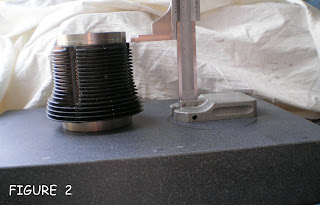
Before wasting any time here, go read:
http://bobhooversblog.blogspot.com/2007/05/av-crankcase-basics.html
...especially the part where I say:
you will need nuts and washers and bolts to fasten the case studs and parting-line. Here again, there are kits available but most are the shoddiest stuff imaginable and price is no guarantee of quality. The nuts and washers may have a wash of zinc plating, good for at least a week’s exposure to the weather. Or they may not. And you can toss the ‘exhaust nuts.’ They are copper plated steel. (The good stuff is bronze.) Before you can use any of this crap on an engine you must provide it with some form of corrosion protection. If you don’t, not only with the nuts rust to the studs, you’ll see galvanic corrosion between the washers and the crankcase that will eventually cause the fastener to loosen.
Although any after-market VW retailer will be delighted to sell you that shoddiest stuff imaginable, the hands-down winner is J.C.Whitney because they usually charge more than most.
Back when I had hair I wrote an article ('Cows') explaining why it was a good idea to not buy VW parts from J.C.Whitney. Fig 1 offers a nice example of why this is still true. In the picture you can see the supposed 140-piece contents of JCW's catalog #xxx380749. (The 'xxx' is the catalog prefix which changes from minute to minute but the basic number stays the same.) A fellow chugger paid $15.99 plus shipping for what you see in the photo only to discover that most of the fasteners were unusable or not needed. (As of 8/23/07 the price is $17.99 making it even worse.)
Here's why: See those sixteen M10 nuts? (Lookit Fig 1A) Didja notice the M8 head stays
 illustrated in the 'Crankcase Basics' article? The M10 nuts & washers are for a pre-1971 crankcase, which you are not using if you're building your engine an a Universal Replacement Crankcase. And if you are starting out with a used crankcase then the odds are you already have a perfectly suitable collection of M10 nuts & washers.
illustrated in the 'Crankcase Basics' article? The M10 nuts & washers are for a pre-1971 crankcase, which you are not using if you're building your engine an a Universal Replacement Crankcase. And if you are starting out with a used crankcase then the odds are you already have a perfectly suitable collection of M10 nuts & washers. Indeed, other than the six M12 nuts shown in Fig 1B everything else shown in Fig 1 is available from the local Borg for significantly less than JCW prices. But even then, the JCW parts are not the sort of stuff you want to use when assembling a good engine.
Indeed, other than the six M12 nuts shown in Fig 1B everything else shown in Fig 1 is available from the local Borg for significantly less than JCW prices. But even then, the JCW parts are not the sort of stuff you want to use when assembling a good engine.A point often overlooked by the shade-tree types is that several VW fasteners are also oil
 seals. The washer and in some cases, the nut, must be prepared and installed in such a manner as to prevent oil from leaking out around the fastener. The best example of this is the four lower head stays on each side of the engine that are terminated inside the valve galleries but this rule also applies to the six M12 nuts, the pair of M8 studs adjacent to the #1 cam bearing and the two M8's that support the #4 Main Bearing.
seals. The washer and in some cases, the nut, must be prepared and installed in such a manner as to prevent oil from leaking out around the fastener. The best example of this is the four lower head stays on each side of the engine that are terminated inside the valve galleries but this rule also applies to the six M12 nuts, the pair of M8 studs adjacent to the #1 cam bearing and the two M8's that support the #4 Main Bearing.Fig 3 shows the type of M12 nut used on later-model Volkswagen engines. The red ring is an elastomeric seal that bears against the heavy washer which itself is bedded in Permatex or other non-hardening sealant, another of those 'unimportant' details casually disregarded by non-professional engine builders, most of whom insist that it's normal for the VW engine to leak like a bitch. Being a stock VW part, the nuts are commonly available but their price varies wildly from an honest thirty-five cents or so to more than a dollar from the typical Screw-the-Newbie suppliers (who always seem to run the biggest
 ads :-)
ads :-)I'll cover the proper application of fastener sealants at the appropriate time. Or you can dig it out of the VW factory service manuals.
But the most regrettable failing of such hardware kits is their failure to provide real exhaust nuts. What you get is a regular steel nut with a wash of copper plating, guaranteed to last for at least thirty minutes before welding itself to the exhaust stud. What you want is a bronze or brass nut, installed upon a bronze, brass or copper washer with a lavish application of anti-seize compound. If you have a small lathe these are easy to make from bar stock but they are also available from the Usual Suspects.
Fig 4 shows a baggie of brass exhaust nuts sized to accept a 12mm wrench, allowing them to be used on the lower exhaust studs without interference when using a custom-built exhaust manifold as is common with aircraft engines.
To me, an engine is a forever kinda thing. There is no Magic Bullet. The reliability of any machine is nothing more than a reflection of paying the keenest possible attention to the smallest details of its assembly. Using the correct fasteners is a big part of that.
-R.S.Hoover










